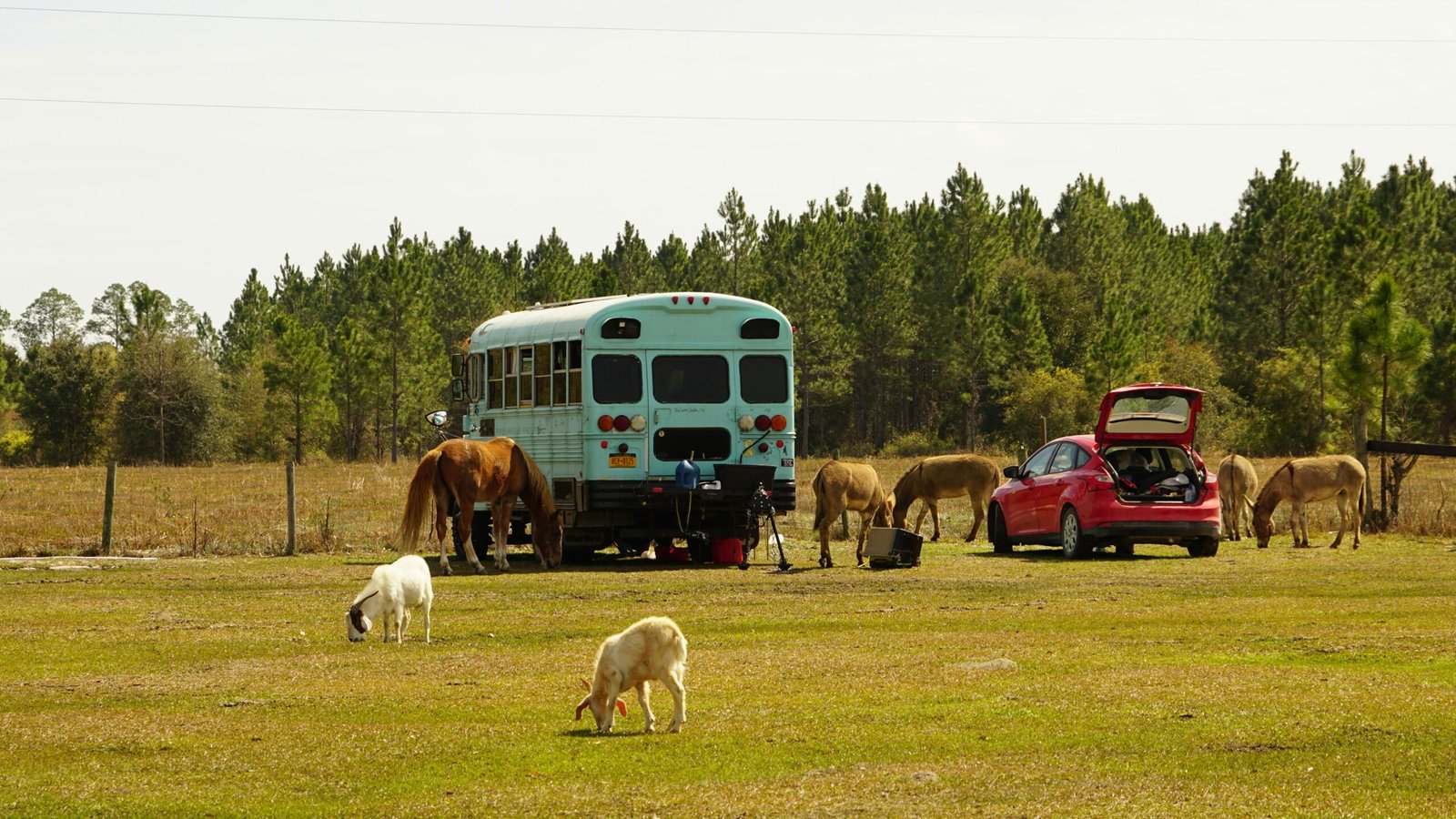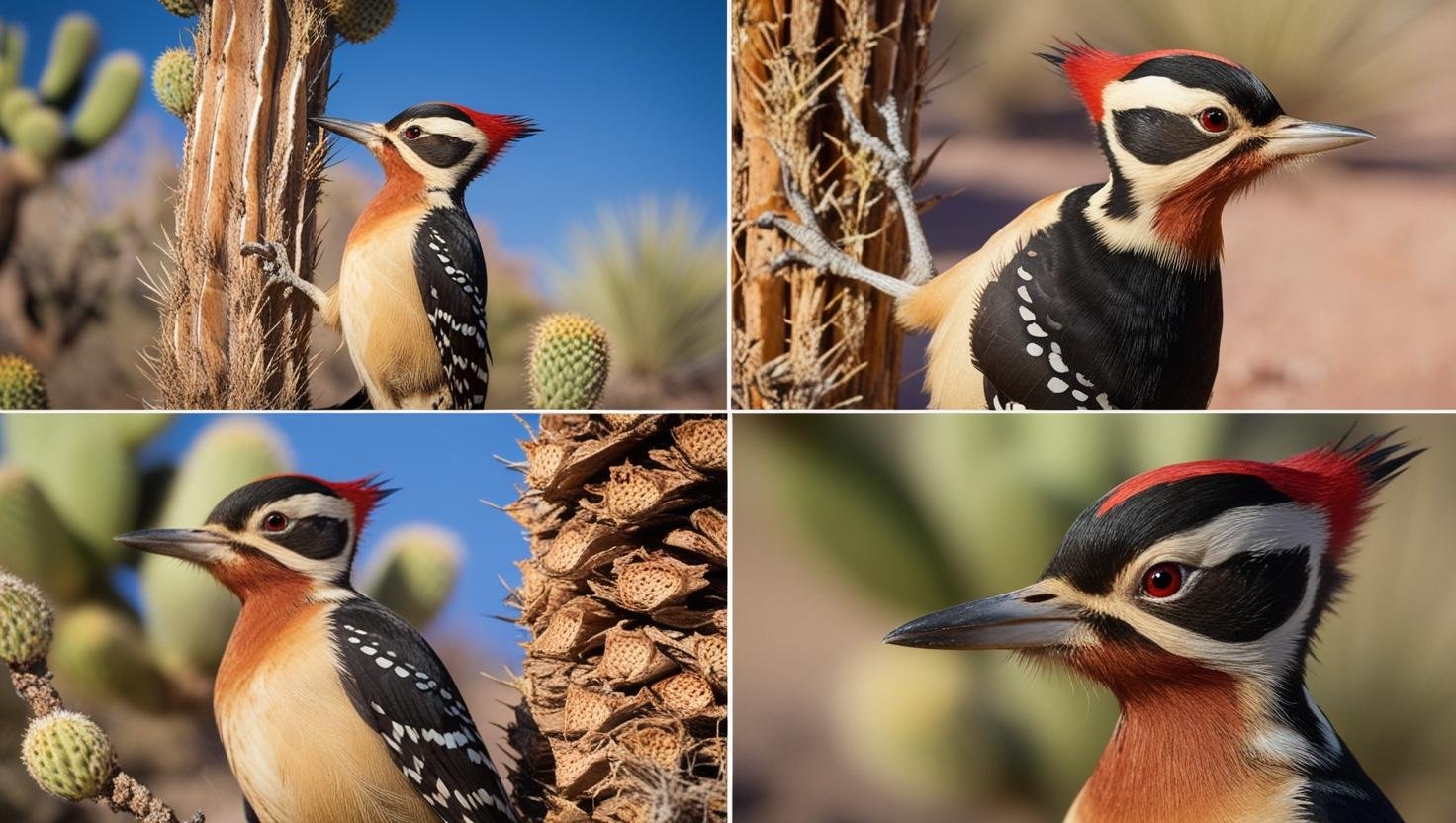March 5, 2025 – By Alex Magalhaes
Introduction to the Gila Woodpecker
The Gila woodpecker (Melanerpes uropygialis) is a medium-sized bird belonging to the Picidae family, predominantly found in the arid regions of the southwestern United States and parts of Mexico. This remarkable bird has adapted well to its desert environment, showcasing various traits that highlight its unique relationship with this ecosystem. Typically measuring around 9 to 10 inches in length, the Gila woodpecker exhibits sexual dimorphism, with the males and females presenting different coloration patterns. Males feature a red cap on their heads, enhancing their striking appearance, while females display a more subdued plumage without this characteristic.
The Gila woodpecker’s feathers feature a combination of pale brown and black, often with streaks and spots that provide effective camouflage against the desert landscape. Its distinctive chisel-like beak is adapted for drilling into cacti and trees, where it forages for insects and larvae. One of its most remarkable adaptations is its behavior of excavating nesting holes and foraging sites within the saguaro cactus, making it a critical species for the desert ecosystem. The Gila woodpecker’s presence benefits other wildlife, as its nesting cavities are often used by various other birds and small mammals once abandoned.
The Gila woodpecker is also known for its distinct vocalizations, which include a series of loud, sharp calls that echo through its arid habitat. These sounds are used for communication, particularly during mating season. Depending on environmental factors, this species may be found in a diverse range of habitats, from deserts and scrublands to urban areas where palm trees are prevalent. Understanding the Gila woodpecker’s scientific classification, physical attributes, and preferred habitats reveals the bird’s fascinating adaptations and ecological significance in the regions it inhabits.
Behavior and Feeding Habits
The Gila woodpecker, a distinctive inhabitant of the desert regions of the southwestern United States, displays unique feeding habits and behavioral characteristics that set it apart from other woodpecker species. This medium-sized woodpecker primarily forages for insects, fruits, and nectar, adapting its feeding strategies to the arid environment it occupies. One distinct aspect of the Gila woodpecker’s behavior is its ability to use various foraging techniques that include pecking, probing, and even climbing on cacti. This adaptability enables it to extract hidden insects residing within decaying wood or beneath the surface of plant materials.
In terms of diet, the Gila woodpecker has developed a preference for specific food sources found in its desert habitat. It commonly feeds on a variety of insects, such as ants and beetles, which are essential for its nutrient needs. Moreover, it is known to consume fruit from cacti, particularly the juicy tunas of prickly pear, and nectar from various flowering plants. This diverse diet not only sustains the Gila woodpecker but also aids in the pollination of those flowering plants, showcasing an important ecological interaction.
The drilling patterns of the Gila woodpecker are distinctive, often resulting in the formation of holes in cacti and trees. These drill marks are not only indicative of their feeding behavior but also serve as indicators of territory for other nearby woodpeckers. Interestingly, the Gila woodpecker often engages in a behavior known as “caching,” where it will store food in various locations to secure its sustenance during lean times. Such interactions highlight the Gila woodpecker’s essential role in its environment, demonstrating behaviors that are finely tuned to its unique desert habitat.
Nesting and Reproduction
The Gila woodpecker (Melanerpes uropygialis) exhibits intriguing mating rituals and nesting behaviors that reflect its adaptation to the arid desert environment. Typically, courtship involves elaborate displays, including drumming and aerial acrobatics performed by the male. These rituals not only attract a mate but also establish territory, which is crucial for successful reproduction.
Nesting begins when a pair selects an appropriate site, often favoring saguaro cacti or other dead or dying trees. The choice of location is vital, as it offers safety from predators and access to food sources. Once they have selected a nesting site, the Gila woodpeckers engage in the construction of tree cavities. This process, primarily undertaken by the male, can take several weeks, during which he chisels out a hollow in the trunk or a cactus, creating a secure environment for their offspring.
The typical clutch size consists of two to five eggs, which the female lays in the prepared cavity. These eggs are generally white and exhibit a smooth surface, which is characteristic of many woodpecker species. Upon laying all the eggs, the female takes on the primary responsibility for incubation, which usually lasts about 14 days. Meanwhile, the male provides food for the female and guards the nest area to protect against potential threats.
After the eggs hatch, both parents share the responsibility of feeding the chicks, which are altricial at birth, meaning they are born helpless and dependent on their parents for survival. The chicks grow rapidly, often fledging around 26 to 30 days post-hatching. However, this reproductive phase comes with challenges, including competition for food, predation, and environmental factors that may affect the availability of resources. Understanding these aspects of Gila woodpecker nesting and reproduction provides insight into the adaptive strategies that define this fascinating desert bird.
Conservation Status and Importance in the Ecosystem
The Gila woodpecker (Melanerpes uropygialis) plays a vital role in the arid ecosystems where it resides, notably in the deserts of the southwestern United States and Mexico. As a species that thrives in desert environments, understanding its conservation status is essential to safeguard both the bird and its habitat. Currently, the Gila woodpecker is classified as a species of least concern by the International Union for Conservation of Nature (IUCN). However, various factors pose significant threats to its population. Habitat loss, primarily driven by urban development and agricultural expansion, considerably impacts the availability of nesting sites. Additionally, climate change induces shifts in temperature and precipitation patterns, further jeopardizing the Gila woodpecker’s food sources and nesting habitats.
Conservation efforts are crucial for ensuring the survival of the Gila woodpecker. Organizations focused on wildlife protection advocate for habitat preservation, particularly in areas where natural woodlands are being altered. Restoration projects that aim to re-establish native vegetation can create an environment conducive to the needs of the Gila woodpecker. Furthermore, community education programs are being implemented to raise awareness of the importance of maintaining biodiversity in desert regions.
The Gila woodpecker plays an integral role in its ecosystem, most notably through its unique behavior of excavating tree cavities. These hollows serve not only as nesting sites for the woodpecker itself but also for other bird species and small mammals. By creating these cavities, the Gila woodpecker fosters biodiversity, allowing various organisms to cohabitate within the same environment. Additionally, the woodpecker contributes to pest control; its feeding habits help regulate insect populations, maintaining the ecological balance essential for healthy ecosystems.
Affiliate Disclosure: As an affiliate, I may earn a small commission from qualifying purchases through links in this article, at no additional cost to you.









